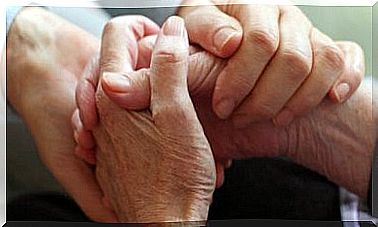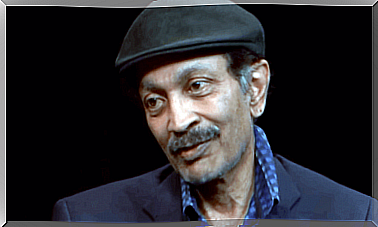Holotropic Breathing Promotes Your Well-being

Holotropic Breathwork (a brand) is an experience-based psychotherapy technique. Experience-based psychotherapy is an approach used to work with mentally healthy people. The idea is to expose patients to an experience that helps them increase their self-awareness and learn how to handle real situations.
It is important to note that experience-based psychotherapy is rooted in so-called transpersonal psychology. The latter is part of humanistic psychology, a branch that originated in the 60s. Specifically, holotropic breathing was created by the Czech psychiatrist Stanislav Grof.
The main goal of holotropic breathing is to reach a higher level of consciousness. Experts say the experience is similar to the effects of psychotropic drugs, used by shamans and some spiritual guides. The difference is that you achieve this condition through your breathing and the purpose is therapeutic.

What is holotropic breathing?
Holotropic breathing is a technique that involves intentional and controlled hyperventilation. The purpose, as we mentioned above, is to reach a state of changed and expanded consciousness. The ultimate goal is to get to know yourself better and enjoy the perceived psychotherapeutic benefits that advocates attribute to the technology.
Hyperventilation involves breathing faster and deeper than usual. When you breathe normally, you inhale oxygen and exhale carbon dioxide (CO2). The accelerated, deep breathing that occurs during hyperventilation increases the volume of oxygen in the body and reduces carbon dioxide levels. Under normal circumstances, this change would cause anxiety, numbness and fainting.
Holotropic breathing is a practice for induced and regulated hyperventilation. In general, only this type of breathing is practiced under controlled conditions, usually in a group. Otherwise, you may cause unwanted problems, such as panic attacks. Experts do not recommend the technology to patients suffering from high blood pressure, respiratory diseases, neurological problems or mental health problems.
The technique
The first step you should take is to learn all about the technology. You should learn what to expect from it and what precautions you should take. Sessions with holotropic breathing tend to be very long. In fact, they are usually longer than four hours.
You should practice this technique in a comfortable and quiet place. Start by entering the room barefoot and lie down on a rug. It also includes playing relaxing music. The music should not be interrupted during the session. When you feel comfortable, start breathing softly.
With your eyes closed or covered with an eye mask, you begin controlled hyperventilation. You need to breathe fast throughout the course of the exercise. Someone has to give directives. Participants can alternate between being the ones breathing and those directing the exercise.
When the session is over, each participant colors a mandala or makes a symbolic drawing about what they feel at the moment. Then everyone shares their individual experience.

The benefits of holotropic breathing
As we mentioned above, the goal of holotropic breathing is to reach an altered state of consciousness through hyperventilation. The basic idea is that this technology allows you to reach the deepest levels of the psyche. As a result, you gain access to subconscious information that can be very valuable to you.
Proponents of her case have been working to make the actual transcript of this statement available online. During the exercise, you may remember people you forgot, situations, feelings or perceptions. This information is important because your brain once blocked it. The only way to recover information is to expand your mind and consciousness.
Research suggests that holotropic breathing has many benefits, especially in terms of relaxation and emotional balance. But there is still no evidence that it produces an altered state of consciousness or allows you to explore your subconscious. However, those who practice it claim that it is possible.








